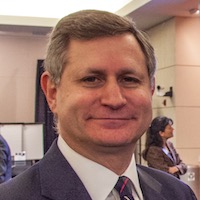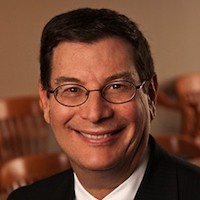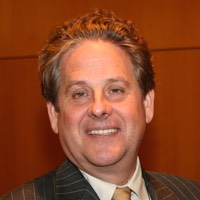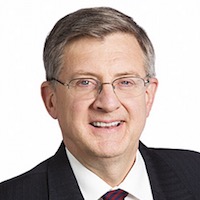 One of the longest running features on IPWatchdog is our Industry Insider’s series, which started out many years ago with an annual “wishes” article. Each year we invite industry insiders to make patent and/or intellectual property related wishes for the new year.
One of the longest running features on IPWatchdog is our Industry Insider’s series, which started out many years ago with an annual “wishes” article. Each year we invite industry insiders to make patent and/or intellectual property related wishes for the new year.
For my wishes, I’ll make three. First, I continue to wish for patent eligibility reform in Congress that would overrule Mayo, Myriad and Alice, although I am mindful of both how naive that sounds and dangerous it could become given competing interests at play. Of course, there is also a very real possibility any statutory reform would simply be ignored by the Supreme Court anyway, as they cling to the judicially created exceptions to patent eligibility that find no support anywhere in the statute or Constitution. Second, I am again also going to wish for meaningful copyright reforms and/or real Internet industry cooperation that recognizes the important rights of content creators, both large and small. It is too easy to steal original content with impunity and that threatens content creators large and small. Finally, while I would like to wish for an end to post grant procedures, I’ll remain content to more modestly wish for a new PTO Director unafraid to reform the post grant process in ways that remove the systemic biases that make the proceedings hopelessly one-sided against patent owners.
Without further ado… I present the patent and IP wishes of our industry insiders for 2017. For additional wishes please see Patent Wishes from K Street for 2017, by Marla Grossman.
[PTAB-1]
 Manny Schecter
Manny Schecter
Chief Patent Counsel, IBM
I wish that our newly elected members of the federal government appreciate the impor-tance of patents to the promotion of innovation. Historically, the strength of our patent system has varied as we try to find the appropriate parameters to optimize the promotion of innovation. We have weakened patents when we perceived the system was too strong and we have strengthened patents when we perceived the system was too weak. Hope-fully, our new government officials understand the ongoing need to find an equilibrium and continue the process of patent system calibration.
Most recently, patents have been weakened by the America Invents Act and recent Supreme Court decisions (e.g., Mayo and Alice) in response to a rise in the volume of patent litigation. I supported passage of the America Invents Act – and I remain supportive – but I also recognize that the current post-patent grant challenge provisions have moved the patent system strength gauge “needle” a bit too far toward the weak side of the gauge. Supreme Court rulings have compounded matters by creating an unworkable and unpre-dictable framework for patent subject matter eligibility, resulting in the unfortunate in-validation of too many worthy patents.
It is time to steer the needle back to strengthen the patent system (but not far enough to make the patent system so much stronger that we promote abusive patent litigation). I hope that our newly elected government officials are of like mind and act accordingly. How? First, by not underestimating the importance of patent policy-relevant federal ap-pointments. Whichever positions there are to be appointed in the Judiciary or Executive Branch, promptly making those appointments will help prevent “progress paralysis” as-sociated with waiting for ideas from yet-to-be-named new talent. Further, appointees should be fully cognizant of recent steps to weaken the patent system and appreciate that those efforts have overshot their target. Recognition that the patent system has been weakened too much is the first and most important step towards patent system optimiza-tion.
 Stephen Kunin
Stephen Kunin
Partner, Oblon, McClelland, Maier & Neustadt, L.L.P.
Former Deputy Commissioner for Patent Examination Policy, USPTO
My patent wish for 2017 is that the USPTO will fair well under the new political leadership of the incoming Administration and the next Congress. It is my hope that the new political leaders of the USPTO will be knowledgeable, politically savvy, and experienced intellectual property professionals who have excellent leadership, managerial, and political skills, knowledge and ability. These individuals should be experienced in dealing with both global and domestic intellectual property and trade issues and have excellent connections within the Administration and Congress to serve as effective advocates for the intellectual property systems and the USPTO’s mission, goals and objectives. Hopefully the USPTO will be receive the funding it needs to succeed and will not be subjected to hiring freezes, limitations on appropriations and other government-wide restrictions that apply to federal activiities that are not fully user fee funded.
 Bob Stoll
Bob Stoll
Partner, Drinker Biddle
Former Commissioner for Patents, USPTO
My first wish for the patent world in 2017 is that President Trump appoints someone to be Director of the USPTO ready and able to lead the Office to new highs. We need to reinvigorate “culture change” at the USPTO; to get examiners, supervisors, applicants, unions and the public all pulling together to support early issuance of strong quality patents. This would remove most of the problems of the system and stimulate economic growth and job creation here and abroad.
My second wish is for the United States Supreme Court to “snap out of it”. Their decisions on patent subject matter eligibility are providing little guidance and harming innovation in the United States. They are driving research in computer implemented processes, diagnostic methods and personalized medicines to foreign shores as Europe and China are allowing the same claims that are denied in our country.
As patent legislation is unlikely due to all of the other pressing matters that will be hitting the judiciary committees on the Hill, I wish that both the USPTO and CAFC would move forward, as much as possible within the confines of existing law to provide guidelines and decisions that stimulate economic growth in the US.
 John White
John White
Berenato & White
PLI Patent Bar Review
The patent system vis-a-vis Bio and Software is in a 35 USC 101 induced free-fall with no parachute. Nothing is more vital, in the near term, than stopping this destruction of property. Remember, this is all nunc pro tunc snatching of property rights. Without exception, every patent holder abided by existing laws and rules: 1) public disclosure; 2) examination; 3) issue and maintenance fee(s). Despite this compliance, the laws and rules were retrospectively changed. Entire business models based on patent value via enforcement have been swept aside as meritless. There is nothing more important to the vitality of the current system than fixing this crisis! These economic value creators (i.e., the very constitutional reasoning behind our patent system) are fleeing our borders for lack of protection!
The fix is a “definition” adjustment for 35 USC 100(a), to wit:
“The term “invention” means invention or discovery, whether of a naturally occurring or man made phenomena.”
Legislative History: This definitional change is expressly intended to overrule the Supreme Court decisions of Myriad and Mayo such that a discovery of a new naturally occurring or man made phenomena, and any application thereof in a process, fall within the ambit of patent eligible subject matter.
For 35 USC 100 (b): “The term “process” means process, art, or method, whether accomplished manually or through the application of an intermediate controlled device, such as a computer, and includes a new use of a known process, machine, manufacture, composition of matter, or material.”
Legislative History: This definitional change is expressly intended to overrule the Supreme Court decisions of Bilski and Alice such that computer implemented methods and the machine control instructions leading thereto are within the ambit of patent eligible subject matter.
 Peter Harter
Peter Harter
The Farrington Group
The biggest wish for 2017 is for the CAFC to follow the rules and write opinions and stop abusing Federal Rule of Appellate Procedure 36. Rule 36 can only be used when a decision is not precedential. Many of the Rule 36 cases involve the controversial area of 101 subject matter eligibility issues in the post-Alice era. One can imagine affirmance without a written opinion makes sense where it is a slam dunk and provides perhaps grounds for fee shifting (i.e. loser pays) – that the party should not have bothered to appeal. But given that experts like Mark Lemley have said at the recent USPTO roundtable on subject matter eligibility hosted by Stanford Law School that since courts are engaged in a common law process post-Alice we are thus beginning to see development of common law jurisprudence to determine what is patentable and what is not. Lemley concluded that then every written opinion is going to be important. In fact, Lemley was very blunt: “101 jurisprudence is offensive because there is no there there.” Thus Rule 36 affirmance abuse by the CAFC exacerbates this nothingness and deprives the general public. Worse, the CAFC says that it does 90% of the work of a written opinion to get to this nothingness. So what is stopping them from the remaining 10%? How does 90% prove non-precedential for them to be compliant with Rule 36?
 Alden F. Abbott
Alden F. Abbott
Rumpel Senior Legal Fellow
Deputy Director, Meese Center for Legal and Judicial Studies
The Heritage Foundation
One big item appears on my 2017 IP wish list – reform of IP-antitrust policy, to be undertaken jointly by the new leaders of the Justice Department’s Antitrust Division and the Federal Trade Commission (FTC).
As I have explained elsewhere (see, for example, here, here, here, and here), Obama Administration antitrust enforcers have undermined intellectual property rights (and, most especially, patent rights) through a variety of actions, including most notably (1) entering into consent decrees that restrict (or totally eliminate) royalty licensing fees; (2) issuing an antitrust “business review letter” that blessed a standard setting organization’s rules that sharply constrained the terms of patent licenses; (3) decrying the problem of “bad patents” and “abusive patent practices” in speeches and other public pronouncements; (4) citing approvingly a directive by the U.S. Trade Representative that blocked the U.S. International Trade Commission from enforcing exclusion orders related to the infringement of “standard essential” patents; (5) issuing reports calling for judicial interpretations aimed at limiting patent royalties, highlighting the “patent troll” problem without strong empirical support, and supporting further legislation that could limit returns to patent holders; and (6) interpreting the longstanding copyright consent decrees with the performing rights organizations BMI and ASCAP in a manner that could limit the scope of permissible copyright licensing and thereby potentially reduce returns to copyright holders. Such actions also have had bad effects overseas – they have enabled foreign governments to invoke American antitrust policy thinking in support of problematic competition law condemnations directed at U.S. companies’ invocations of IP rights.
It is my hope that the new heads of the FTC and the Antitrust Division will agree to reverse the Obama Administration’s misbegotten IP-antitrust policy. Specifically, they should consider (at a minimum) the following steps: (1) reasserting the understanding that IP rights are full-fledged property rights that merit respect and strong protection, in public pronouncements, guidance documents, and court filings; (2) revising the proposed new FTC-Justice Department IP-Antitrust Licensing Guidelines to reflect the recommendations of the Scalia Law School’s Global Antitrust Institute (see my commentary here); (3) publicly disavowing in speeches (both here and abroad), testimony, and future reports and guidance the ill-advised approach to IP-antitrust analysis; (4) publicly affirming that U.S. International Trade Commission exclusion orders should be fully available to all categories of U.S. patents that face infringing imports; (5) working within the Trump Administration to support regulatory and legislative reforms aimed at strengthening, rather than weakening, IP rights; (6) in consultations with foreign governments, working to strengthen respect for IP rights and to oppose foreign enforcers’ misapplications of competition law that weaken IP rights; (7) disavowing specific proposals in prior FTC reports that could be read as supporting particular patent legislative proposals or the adoption of judicial interpretive approaches that would reduce returns to patent rights; (8) rescinding the 2015 Justice Department business review letter to the Institute of Electrical and Electronics Engineers that implicitly endorsed standard setting policy aimed at reducing returns to patent licensors (see my commentary explaining this issue here); and (9) rescinding its 2016 reinterpretation of the ASCAP-BMI consent decrees, in order to authorize greater flexibility in copyright licensing terms, consistent with accepted practices (see my Heritage Foundation Commentary discussing this issue here). (This is undoubtedly an incomplete list – the overall theme should be a total reversal of Obama Administration IP-antitrust policy, facilitated by early and regular consultations between senior policy officials from the Antitrust Division and the Justice Department.)
While no panacea, such actions would at least begin to restore balance to the IP-antitrust balance in the United States – and, hopefully, begin to influence foreign competition authorities to avoid (or at least reduce) anti-IP bias in their enforcement actions.

![[IPWatchdog Logo]](https://ipwatchdog.com/wp-content/themes/IPWatchdog%20-%202023/assets/images/temp/logo-small@2x.png)

![[Advertisement]](https://ipwatchdog.com/wp-content/uploads/2024/04/Artificial-Intelligence-2024-REPLAY-sidebar-700x500-corrected.jpg)
![[Advertisement]](https://ipwatchdog.com/wp-content/uploads/2024/04/UnitedLex-May-2-2024-sidebar-700x500-1.jpg)
![[Advertisement]](https://ipwatchdog.com/wp-content/uploads/2024/04/Patent-Litigation-Masters-2024-sidebar-700x500-1.jpg)

![[Advertisement]](https://ipwatchdog.com/wp-content/uploads/2021/12/WEBINAR-336-x-280-px.png)
![[Advertisement]](https://ipwatchdog.com/wp-content/uploads/2021/12/2021-Patent-Practice-on-Demand-recorded-Feb-2021-336-x-280.jpg)
![[Advertisement]](https://ipwatchdog.com/wp-content/uploads/2021/12/Ad-4-The-Invent-Patent-System™.png)






Join the Discussion
One comment so far.
Benny
January 4, 2017 05:28 amLogic alert.
John White suggests that “the term ““invention”” means invention or discovery, whether of a naturally occurring or man made phenomena”.
Who do I sue for infringement of a patented naturally occurring phenomena? Nature? God? I suppose White is referring only to a newly discovered useful man-made application of a naturally occurring phenomena.